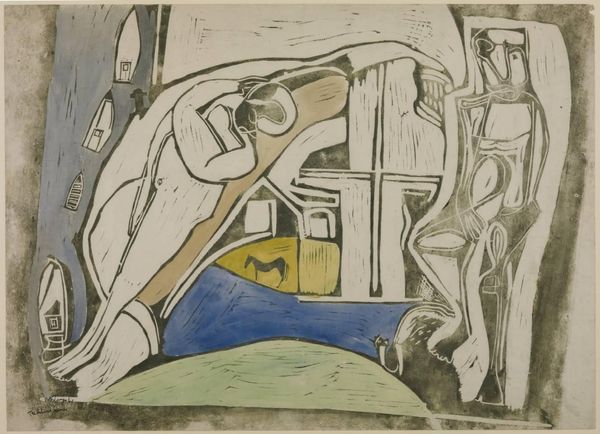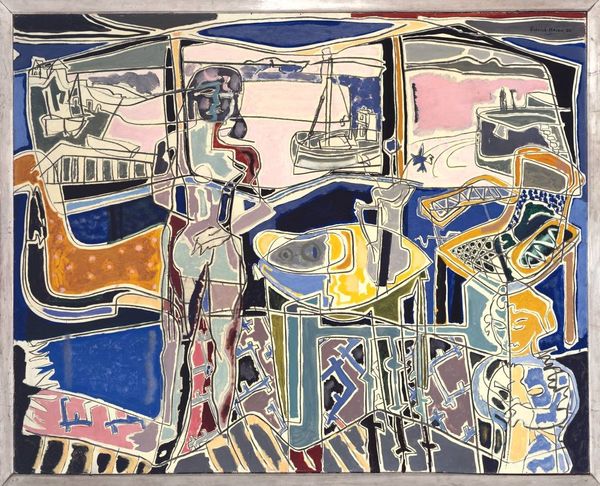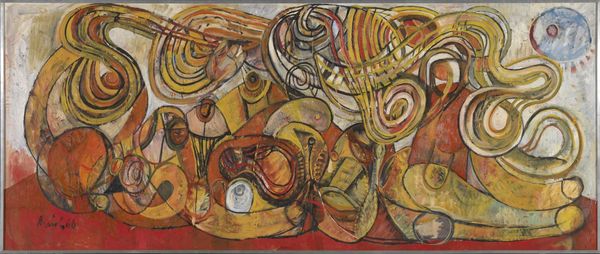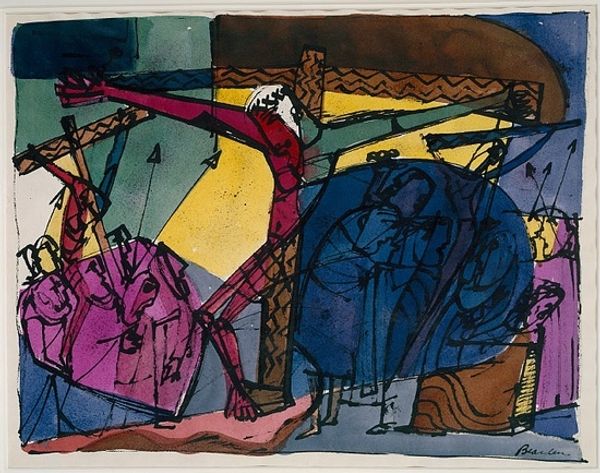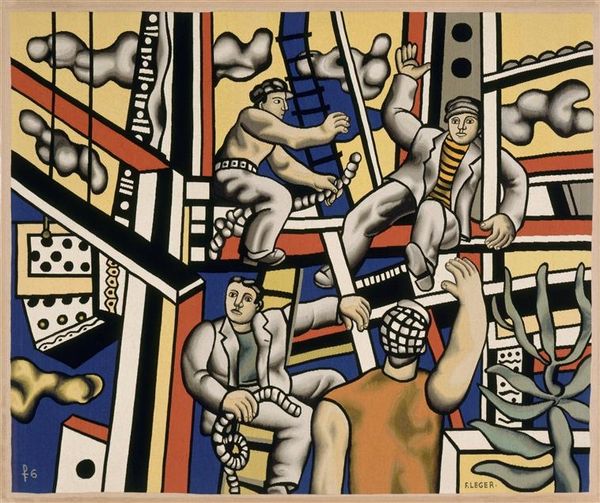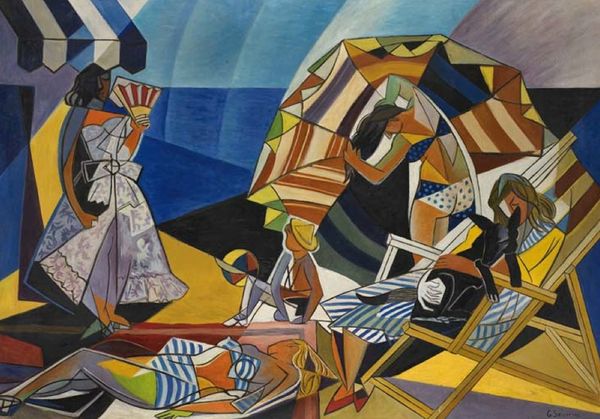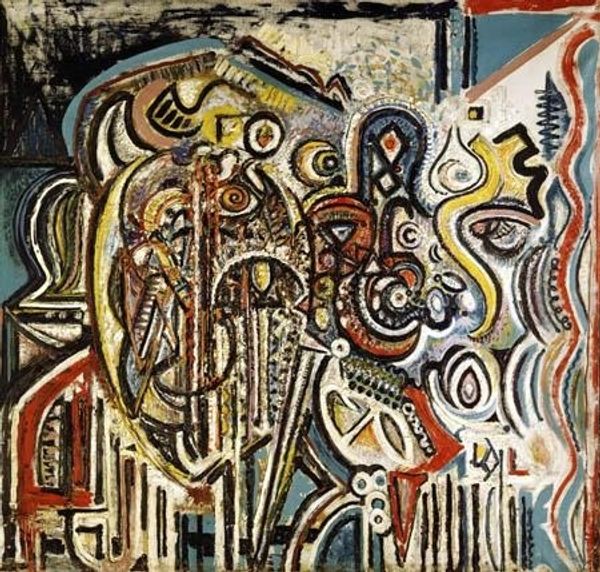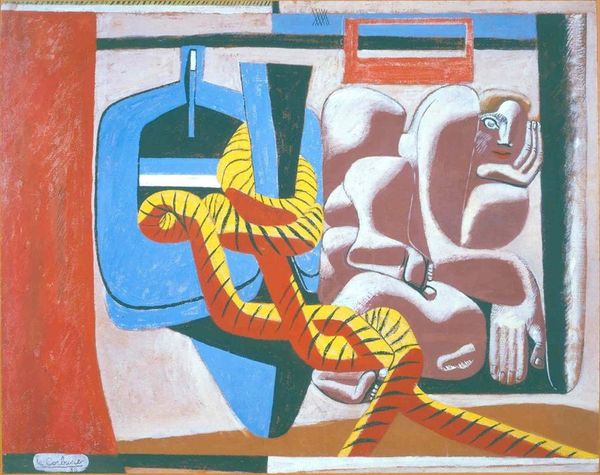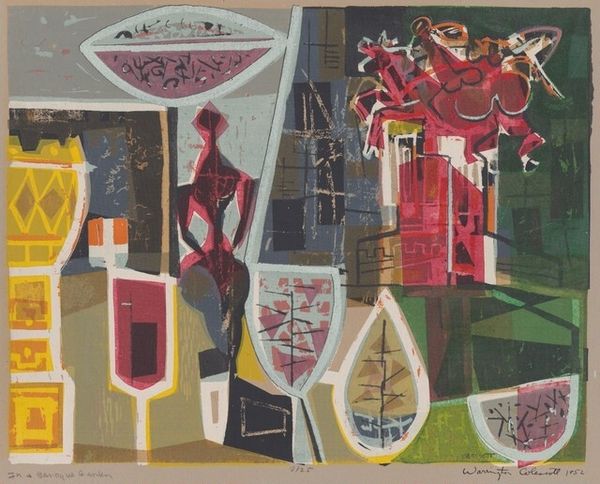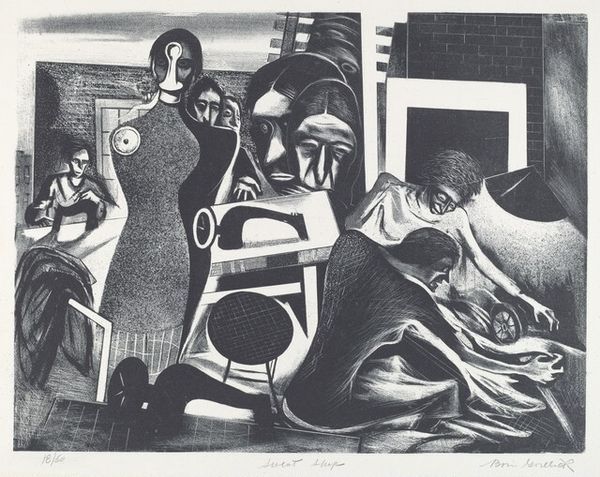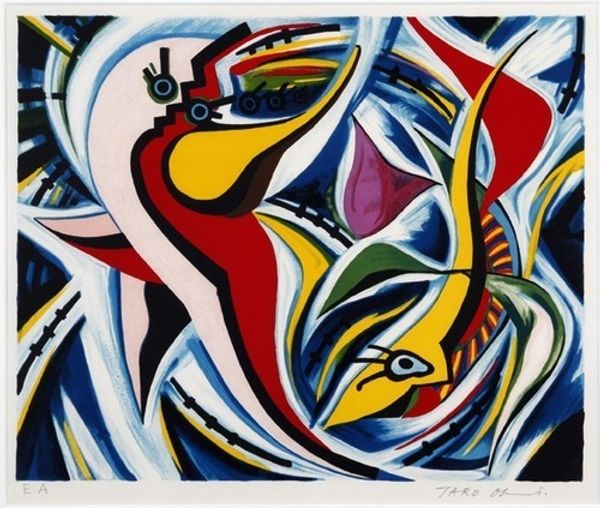
print, woodcut
# print
#
graffiti art
#
figuration
#
social-realism
#
mural art
#
woodcut
#
cityscape
Dimensions: image: 305 x 408 mm sheet: 335 x 471 mm
Copyright: National Gallery of Art: CC0 1.0
Curator: This is "Under the El," a woodcut print by Bernece Berkman-Hunter, likely created between 1950 and 1955. The composition is striking. What's your initial reaction? Editor: Claustrophobia, definitely. The jagged lines and dense arrangement of figures, all hemmed in by the looming El structure – it feels intensely urban, almost oppressively so. I’m really drawn to how rough and visceral the printing process must have been. Curator: That feeling of oppression resonates, and is precisely what artists were hoping to communicate. It seems to me she's exploring the psychological impact of urban infrastructure on those living in the city, using symbolic distortion. Notice how the figures’ faces are almost masks, their expressions obscured. Editor: It’s fascinating how she captures the specific weight of this structure using material itself, right? Each line, each color block of that El has weight, mass from the carved-away wood and printed on the paper. Curator: Precisely. Consider how elevated trains themselves can become symbols of both progress and marginalization, offering mobility yet casting shadows. Note the crude almost folk-art figuration. Does the use of woodcut offer insights? Editor: Absolutely. Woodcut, unlike say lithography, requires a brute force and physical intervention. You’re digging in. Her choice says something, too, about highlighting the hand-made amidst the machined, gridded, oppressive environment above. I'm thinking, where exactly might this be? Curator: The artist's own Lower East Side neighborhood maybe? She experienced firsthand the tension between individual experience and the overwhelming presence of these massive steel structures. The composition seems deliberately fractured. Editor: That makes sense. I am stuck on that process. You think about the repetitive physical work involved, each print becoming both artwork and social commentary on repetitive, industrialized labor in cities, like NYC at the time. Curator: It becomes a social commentary. The print, then, acts as a mirror reflecting both the visible reality of the city and its impact on our internal landscapes. Editor: It gives a fresh perspective. What a fascinating convergence of material and mood; of medium and the message. Curator: Agreed. A powerful work of layered social commentary rendered with impactful materiality and potent visual metaphor.
Comments
No comments
Be the first to comment and join the conversation on the ultimate creative platform.
